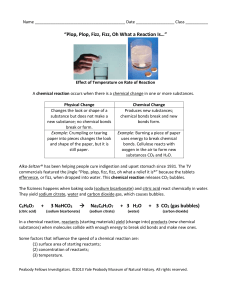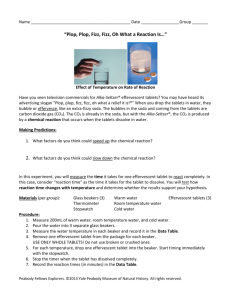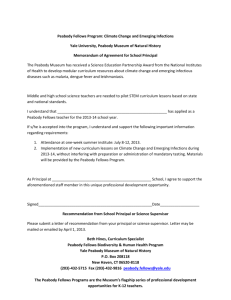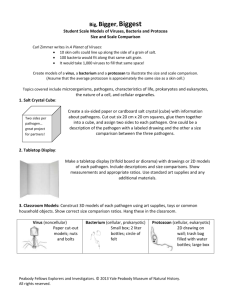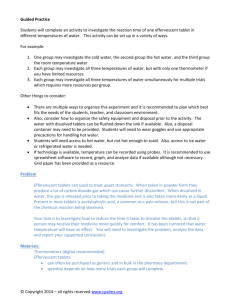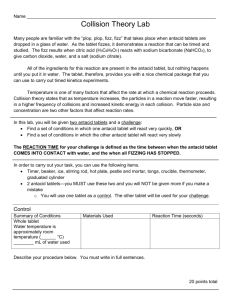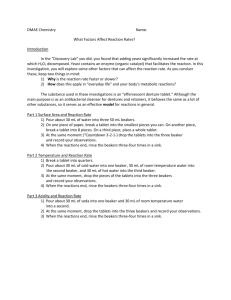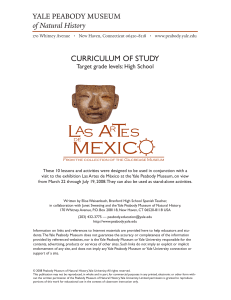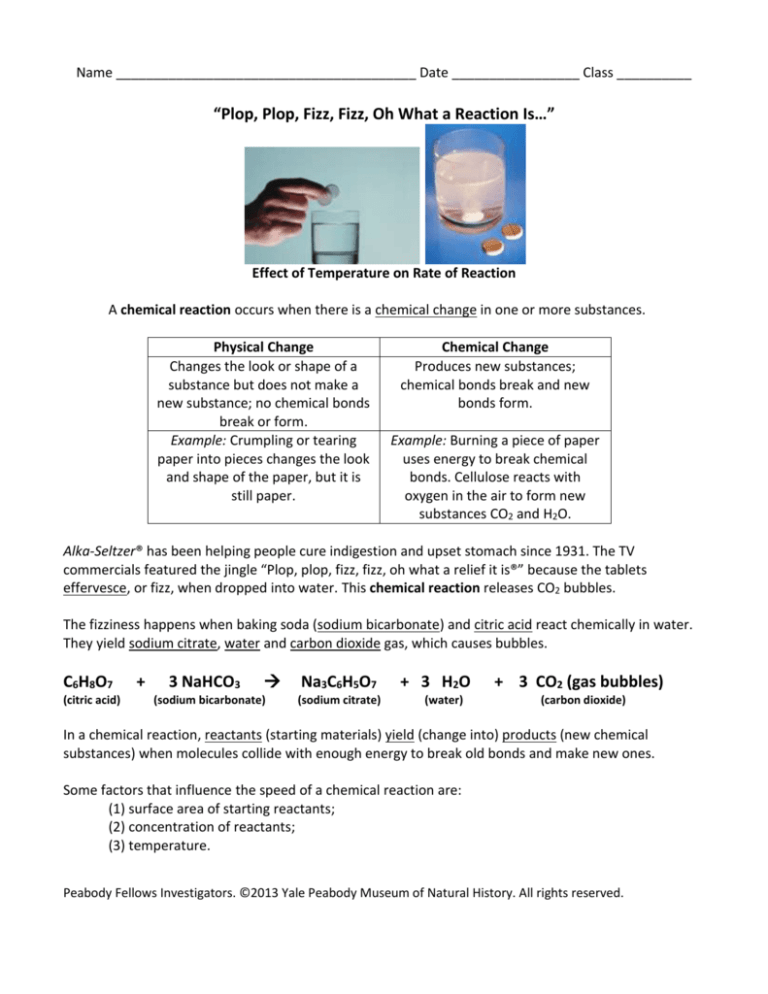
Name ________________________________________ Date _________________ Class __________
“Plop, Plop, Fizz, Fizz, Oh What a Reaction Is…”
Effect of Temperature on Rate of Reaction
A chemical reaction occurs when there is a chemical change in one or more substances.
Physical Change
Changes the look or shape of a
substance but does not make a
new substance; no chemical bonds
break or form.
Example: Crumpling or tearing
paper into pieces changes the look
and shape of the paper, but it is
still paper.
Chemical Change
Produces new substances;
chemical bonds break and new
bonds form.
Example: Burning a piece of paper
uses energy to break chemical
bonds. Cellulose reacts with
oxygen in the air to form new
substances CO2 and H2O.
Alka-Seltzer® has been helping people cure indigestion and upset stomach since 1931. The TV
commercials featured the jingle “Plop, plop, fizz, fizz, oh what a relief it is®” because the tablets
effervesce, or fizz, when dropped into water. This chemical reaction releases CO2 bubbles.
The fizziness happens when baking soda (sodium bicarbonate) and citric acid react chemically in water.
They yield sodium citrate, water and carbon dioxide gas, which causes bubbles.
C6H8O7
(citric acid)
+
3 NaHCO3
(sodium bicarbonate)
Na3C6H5O7
(sodium citrate)
+ 3 H2O
(water)
+ 3 CO2 (gas bubbles)
(carbon dioxide)
In a chemical reaction, reactants (starting materials) yield (change into) products (new chemical
substances) when molecules collide with enough energy to break old bonds and make new ones.
Some factors that influence the speed of a chemical reaction are:
(1) surface area of starting reactants;
(2) concentration of reactants;
(3) temperature.
Peabody Fellows Investigators. ©2013 Yale Peabody Museum of Natural History. All rights reserved.
As temperature increases, molecules of water collide with each other faster, allowing reactions to occur
faster. What effect might increased or decreased temperature have on the rate of the effervescence
reaction? Do you think that the tablet might dissolve faster or slower with temperature change?
Create a hypothesis:
In this experiment, you will measure the time it takes for one effervescent tablet to react completely. In
this case, consider “reaction time” as the time it takes for the tablet to dissolve. You will test how
reaction time changes with temperature and determine whether the results support your hypothesis.
Materials (per group):
Glass beakers (3)
Thermometer
Stopwatch
Effervescent tablets (3)
Warm water
Room temperature water
Cold water
Methods:
1. Measure 200mL of warm water, room temperature water, and cold water.
2. Pour the water into 3 separate glass beakers.
3. Measure the water temperature in each beaker and record it in the Data Table.
4. Remove one effervescent tablet from the package for each beaker.
USE ONLY WHOLE TABLETS! Do not use broken or crushed ones.
5. For each temperature, drop one effervescent tablet into the beaker. Start timing immediately
with the stopwatch.
6. Stop the timer when the tablet has dissolved completely.
7. Record the reaction times (in minutes) in the Data Table.
Results:
Data Table
Condition
Temperature (oC)
Reaction Time
(minutes and seconds)
Warm
Room Temperature
Cold
Peabody Fellows Investigators. ©2013 Yale Peabody Museum of Natural History. All rights reserved.
Graphing:
Graph the reaction time (minutes) on the y-axis against the water temperature (degrees Celsius) on the
x-axis for the entire class.
How does reaction time change with temperature?
Do the results support your hypothesis? Why or why not?
Experimental Design:
What is the dependent variable?
What is the independent variable?
Which variable(s) are constant?
If some tablets are whole and some are broken, would the temperature experiment still be valid? Why
or why not?
If some students stirred the water while their tablets were dissolving, would the temperature
experiment still be valid? Why or why not?
If everyone in the class used a different water temperature, could you average the results? Why or why
not?
If you used different brands of antacid tablets, would the results be valid? Why or why not?
How does this activity relate to the life cycle of a mosquito?
Peabody Fellows Investigators. ©2013 Yale Peabody Museum of Natural History. All rights reserved.
Teacher Notes
Hints and Tips for Teachers:
If your students are not familiar with the Alka-Seltzer® commercials, several versions are
available on YouTube.
You can also use generic brand effervescent tablets.
You might like to introduce this activity with a review of physical and chemical changes.
Comparing tearing paper with burning paper is a good example. Sugar also shows a physical
change when dissolved in water, but a chemical change when burned. However, it is both a
physical and chemical change to dissolve salt in water. Even though you can recover salt crystals
by evaporating the water, the Na+ and Cl– ions dissociate when dissolved.
This lab can be done without timing the reaction. For a quick demonstration, drop the tablets
into each of the three water temperature beakers simultaneously and just observe the difference
in reaction times.
Extensions:
Calculate the standard deviation of the reaction times for each temperature. Add error bars to your
graph to show the amount of variance in the data.
Is reaction rate predictable over a larger temperature range? Use higher and lower temperatures to test
reaction rate.
Peabody Fellows Investigators. ©2013 Yale Peabody Museum of Natural History. All rights reserved.

